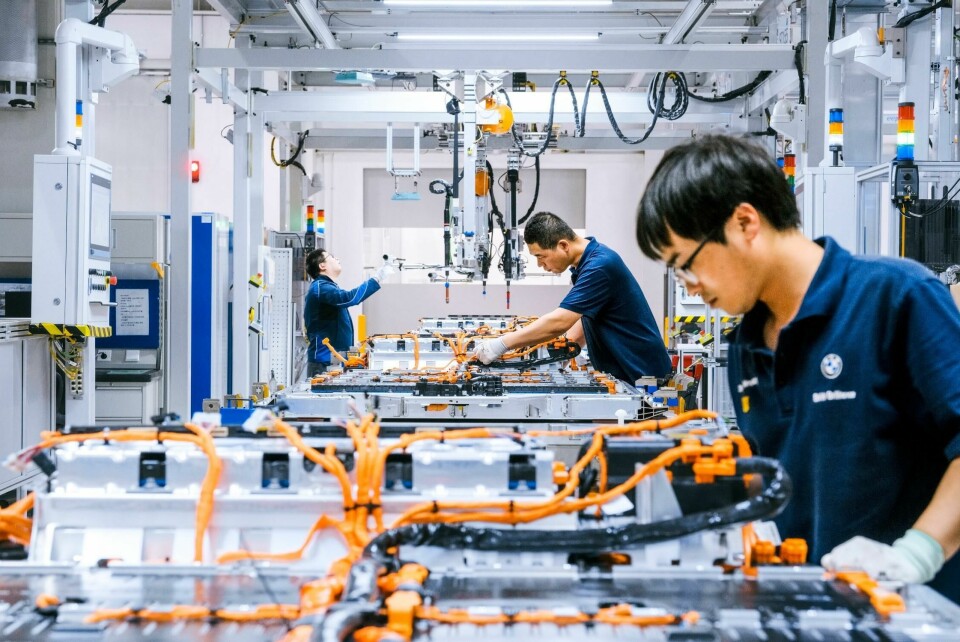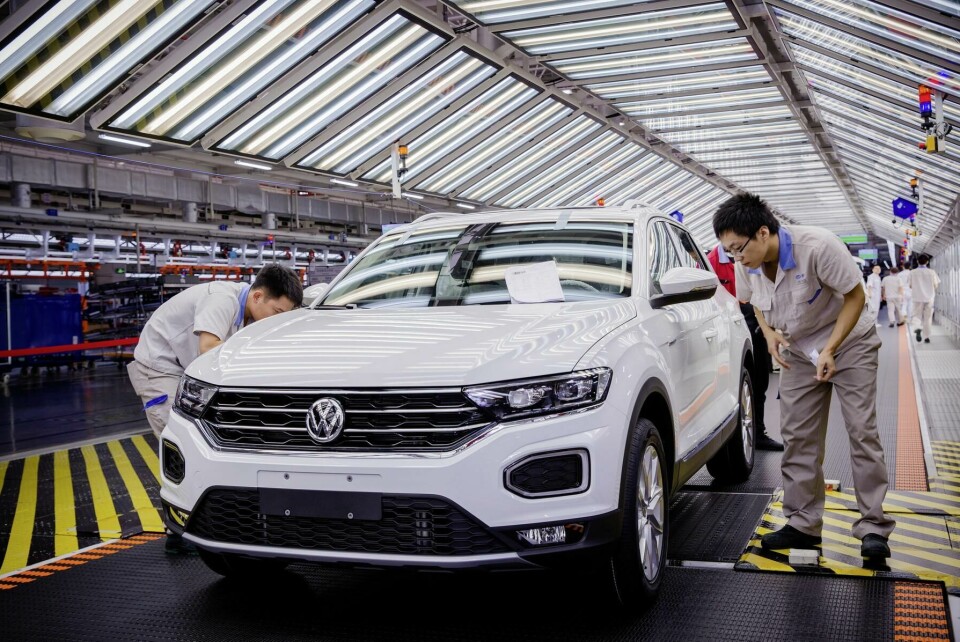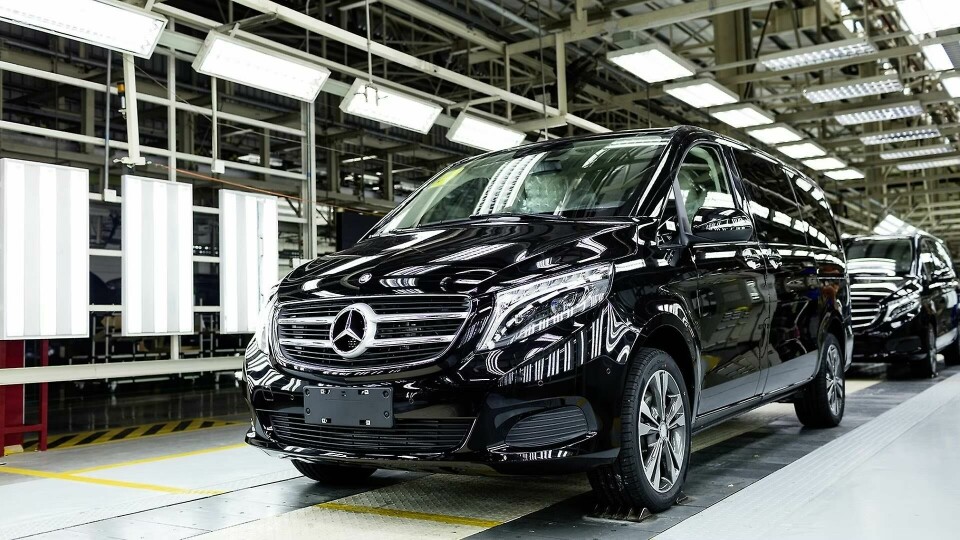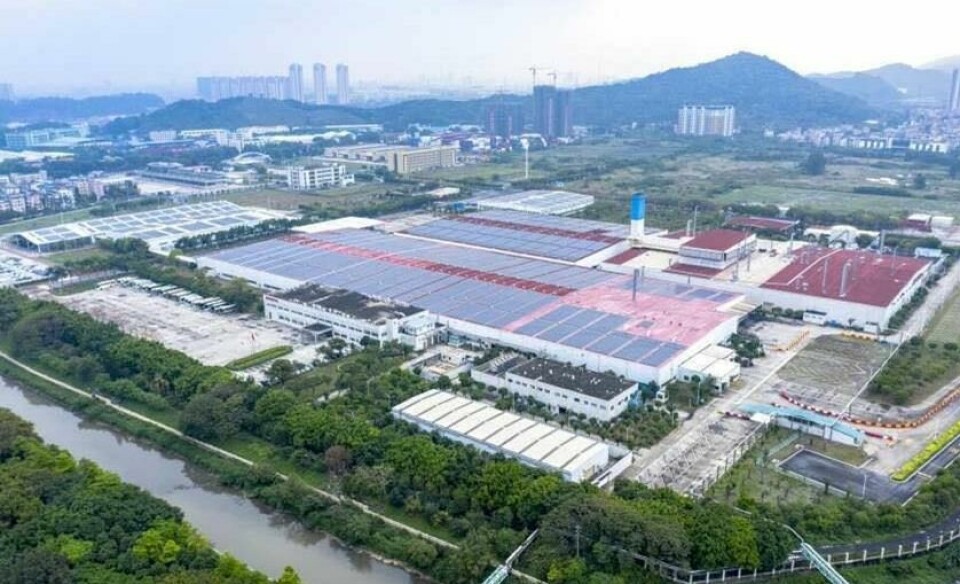
China: Fierce domestic competition sees international brands suffer lower sales and a contraction of output
As China’s domestic brands consolidate and grow both at home and internationally, the international brands, which have benefited from growth in the Chinese market over the years, now face serious headwinds.
All the international OEMs are now reappraising their plans for China. While the international brands still have around 40-45% share of Chinese production, this is declining and with GM, Ford, Honda and Nissan either closing plants or cutting back on their manufacturing line-ups the country, the domestic players will become ever more important in their home market. BMW, Mercedes and VW continue to invest in China, but they are reorientating their business focus, designing and manufacturing more vehicles specifically for China, and making greater use of Chinese tech companies as suppliers.
”Mary Barra has also described China’s EV market as “a race to bottom”, but it is also a race which the company, for now at least, wants to stay in”
Ian Henry
Sharp drops in profits see US OEMs facing difficult decisions
Stellantis has never had a major presence in China, either as Chrysler-Jeep, or through its European arm (Peugeot etc), so the focus here is on Ford and specifically GM, whose principal partner since it arrived in China has been state-owned SAIC. In recent years, GM’s China strategy has involved using its facilities to export some vehicles back to the US, notably the Buick Envision. Whether this will be viable in future as US policy regarding China changes under President Trump remains to be seen.
In July, GM announced a loss of US$104m in China for Q2/2024, following a US$106m loss in Q1. The Q2 loss was also a major reversal from the US$78m profit in the same quarter in 2023. In response, CEO Mary Barra has announced a restructuring of GM in China but added that GM is not leaving the country. However, other than cutting jobs in its Chinese R&D and marketing functions, few details on exactly what it will do have emerged.
The situation worsened in Q3 for which GM announced a net loss in China of US$137m against a profit of US$192m in Q3/2023. In September GM had also announced it would review the situation in China with SAIC and was considering further cutbacks in their JVs. This could involve transferring a greater share in the JVs to SAIC and/or plant closures.
Mary Barra has also described China’s EV market as “a race to bottom”, but it is also a race which the company, for now at least, wants to stay in. US financial analysts have begun to suggest that GM – and Ford – should pull out of China. The pressure to do so for financial reasons will rise, and the political pressure to do so too, now that Donald Trump has been re-elected president, will likely increase as well.
That said, the Buick brand will be at the centre of the revised GM strategy for China, alongside two Chinese brands, Baojun and Wuling. Buick will also add an EREV model for China, in response to similar moves by domestic players.
”In the long term, it will be difficult for GM and Ford to export vehicles back to the US and may become impossible if new rules banning Chinese software and hardware from the US automotive market”
Ian Henry
In the not-too-distant past, China was GM’s biggest market and Ford also used to make good profits there. It does not do so now and is now refocusing Chinese operations away from supplying the domestic market. Instead, it wants to make them into an export hub, building on existing exports to Latin America and parts of Asia. Ford stopped production of its compact sedans and crossovers at a JV with Changan in 2023, however, production of the Ford Mondeo and Equator SUV have continued, and these will form the heart of Ford’s export plans.
In the long term, it will be difficult for GM and Ford to export vehicles back to the US and may become impossible if new rules banning Chinese software and hardware from the US automotive market. These rules, initiated under President Biden but almost certainly to be continued under President Trump, will not only make BYD and quite probably Chinese-made Volvo/Polestar models unsellable in the US, but also prevent GM importing the Buick Envision and Ford importing the Lincoln Nautilus; around 22,000 Envisions and 17,500 Nautilus vehicles were sold in the US in H1/2024.
In other developments at Ford, Jim Farley, its CEO, told the press in October that he did not want to stop driving a Xiaomi SU7 which he had imported personally from China and which he had been driving on US roads for six months. For a Ford CEO to admit this might seem heretical, but it is also a clear sign that the US giants recognise that even new Chinese EV companies may well be taking a technological lead over established players such as Ford.

The Volkswagen group has recently launched a new “in China, for China” strategy
European OEMs look to Chinese tech partners to support vehicle development and sales
Just like the US companies, the German VMs have found their once pre-eminent position in China under threat. The first and still the biggest European VM in China is Volkswagen. The group has recently launched a new “in China, for China” strategy. The first new vehicle under this strategy is the ID Unyx01, a coupe-crossover described an “intelligently networked” vehicle which will be sold through 40 exclusive stores in 20 cities focused on “lifestyle-oriented customers”. At least four more ID. UNYX models will be launched by 2030, part of a wider VW group plan to launch 34 new vehicles in China by 2030; 16 of these will be electric vehicles using various ID designation, 12 will have conventional ICE powertrains and six will be plug-in hybrids.
”Overall, the VW group has 39 (soon be 38) factories in China, covering vehicles and component production. However, with vehicle output down by more than 25% on pre-Covid volumes, the company must lower its fixed costs in the country”
Ian Henry
The first ID Unyx model will be made at the Anhui factory, a JV with JAC Motors in which VW is the major partner, with a 75% stake. This is where Cupra EVs are made as well as Volkswagen models. In a second move to place itself closer to Chinese consumers, VW has taken a 4.99% stake in Xpeng (at a cost of US$700m). This is a new EV manufacturer and vehicles made with Xpeng are likely to be entry level models also sold under the new sub-brand ID UX using the new China Main Platform (CMP).
However, at one of its two oldest 50:50 Chinese JVs, with SAIC, Volkswagen is planning to close a factory in Nanjing, stopping production of the local version of the Passat and some Skoda models. This will cut 360,000 units’ annual capacity from Volkswagen’s Chinese operations; a second factory, at Ningbo, which also makes Skodas has been idled for several months over the last year or so and may also be closed.
Overall, the VW group has 39 (soon be 38) factories in China, covering vehicles and component production. However, with vehicle output down by more than 25% on pre-Covid volumes, the company must lower its fixed costs in the country. To date only the Nanjing plant is earmarked for closure but given the problems affecting VW more widely, it would not be surprising if more factories in China were closed, the commitment to new investment there notwithstanding. As well as restructuring its manufacturing operations and the model portfolio offered in China, Volkswagen is also changing the role of China in its R&D operations globally.
Its R&D facility in Anhui will play a greater role, becoming the group’s second R&D centre and renamed as the VCTC, Volkswagen China Technology Co.; this will be taking charge of model development for vehicles made in the company’s three production JVs with SAIC, FAW and most recently with JAC at Anhui (in which it invested 4.9bn yuan earlier this year, maintaining a 75% stake, with JAC retaining the other 25%).
“Mercedes used to be an equal partner but reduced its holding just 10% in 2021 and this year left the project to BYD entirely”
Ian Henry
VCTC will see employment rise from 2000 to 3000 as part of this switch, with future vehicles made on two platforms, namely the European developed MEB and the China-developed CMP (China Main Platform). The CMP platform will also be used by Volkswagen in India as the European MEB platform is deemed too expensive for the Indian market. Meanwhile Audi and SAIC are developing another China-specific platform, with the first EVs from this programme coming to market in 2025.
Next year Audi will also launch models on its own Premium Platform Electric (PPE) and several new models aimed at younger buyers, using the Audi name, but without the iconic four rings badge.

Production of the Multi-Purpose-Vehicle V-Class at the Fuzhou plant of Fujian Benz Automotive Co
Mercedes is looking at China as a source for new high-tech partnerships to add features to its models made in the country; the increasingly “technology-savvy” nature of Chinese consumers means VMs have to offer new technology more quickly than in Europe. This has led to Mercedes allocating specific resources to finding potential new “tech” suppliers in China. the forthcoming electric CLA is due to be the first new vehicle to benefit from new suppliers, specifically digital map and in-car entertainment systems.
Mercedes’ Chinese challenges are reflected in its financial results; slowing demand there has led to its profit margin being reduced for the second time in two months and are now stated as 7.5-8.5%, having been over 10% earlier in 2024. One of the consequences is that Mercedes has had to cut out ephemeral involvements; in China this has led to it pulling out of the Denza JV which it had operated in conjunction with BYD; Mercedes used to be an equal partner but reduced its holding just 10% in 2021 and this year left the project to BYD entirely.
Despite this, Mercedes has decided to invest in its own Chinese operations; in September this year it announced a US$2 billioßn programme which will see a number of cars and vans produced in China. These will use the MMA (Mercedes Modular Architecture) and VAN.EA (electric van) platforms. The electric CLA referred to above will the first car to be produced under this plan. Production will take place at Beijing Automotive with subsequent models for Mercedes in China being a long wheelbase version of the GLE to be made in and sold solely in China, along with an electric MPV to be made at Fujian Benz. This is a three-way JV between Mercedes, Beijing Automotive and Fujian of Lizhou.
”The Japanese VMs are also not immune to serious challenges in China. Honda has cut back and closed one plant, albeit opening two more, one in association with GAC and one with Dongfeng for EVs”
Ian Henry
Meanwhile BMW, which makes its own and Mini models in the country, has seen sales decline by 13% in the first nine months of 2023, but they were down 30% in Q3 alone. As China represents around one quarter of BMW’s global sales such a fall is significant. BMW however continues to invest in China, having recently brought a new battery plant on steam following an investment of 10 billion yuan (US$1.4 billion).

Slow EV rollout hurts Japanese OEMs vehicle sales in China
The Japanese VMs are also not immune to serious challenges in China. Honda has cut back and closed one plant, albeit opening two more, one in association with GAC and one with Dongfeng for EVs. Both new plants will make 120,000 EVs a year while the plant which has closed – a Dongfeng JV factory making petrol engine cars – could make 240,000 if fully utilised.
Meanwhile Nissan – which recently announced plans to cut global capacity by 20% and 9,000 jobs worldwide in November – has described its Chinese operations as embroiled in “a survival game”. Makoto Uchida, Nissan’s CEO, told the FT earlier this year that the company was committed to staying in China and that it would launch five new EVs or hybrids over the next two years. Like Mercedes it will look to Chinese technology companies to provide new content and features for its cars made in the country, with a supply arrangement with Baidu for AI technology the first of such moves.
In mid-2024 the company announced the closure of a factory in Guangzhou, which like the Honda plant above, was a JV with Dongfeng. This takes 130,000 units – or 10% – out of Nissan’s capacity in the country. Given the wider problems at Nissan and its much slower roll out of EVs than the domestic players, it would not be surprising if more Nissan capacity were slashed in China in the near future.
Read more stories about China’s production rise
- What next for Chinese investment in Europe?
- Chinese vehicle makers look to international markets for growth
- BYD and Apple’s secret EV battery partnership revealed
- Ford, GM, Stellantis fight EV slowdown, tariffs, IRA & China
Toyota also faces problems in China. It sold c950,000 vehicles there last year but sales in the first nine months of this year were 518,000, nearly 25% down year-on-year. The impact on production of Toyota models in China in H1/2024 has been stark, with output down 22%. As with Nissan, part of Toyota’s problems derive from the company’s slowness in rolling out a complete EV range.
Again, mirroring Nissan, most of Toyota’s investments in EVs and battery capacity are and will continue to be in Japan, so it may well join its Japanese counterparts in seeing a continuing decline in production volumes in China. However, there have been some reports that Toyota is considering building a Lexus plant in Shanghai, making electrified – i.e. both PHEV and BEV – models.
It has also said it wants Lexus to be a pure electric brand in China by 2030 but believes it needs the PHEV models to maintain its presence in China in the meantime. Toyota’s plans for China, like those of other major international brands in country, are in flux; and given the strength of the domestic players, remaining in flux and ultimately contracting still further is likely to be the collective experience of the once dominant international cohort of vehicle manufacturers in the country.